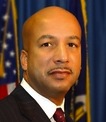Undoubtedly, Mayor Ray Nagin will go down in New Orleans history as a leader who speaks his mind. Exhibit A, of course, is his 2006 remark that the city will be “chocolate at the end of the day.” Likewise, it’s impossible to forget the mayor’s Sept. 2, 2005, command to “get every doggone Greyhound bus line in the country and get their asses moving to New Orleans.”
That said, sometimes one has to wonder about the the logic running through his mind when these memorable gems spill forth.
One of those times was this morning on WBOK-AM talk-radio, which targets African-American audiences, when Nagin urged listeners to make sure the next City Council and mayor has “your best interests at heart.” If they don’t, “money will be carved up and put into certain sections of the city…while other sections will be ignored,” he said.
The mayor provided no specifics, but the implication vibrated through the airwaves clearly enough: Without African-American leadership, majority black areas such as eastern New Orleans and the Lower Ninth Ward would be neglected while recovery flowed to whiter parts of the city. The secondary inference was that he, as the mayor, had prevented that injustice from occurring. It’s not hard to imagine what the mayor was thinking when he said that. That, however, doesn’t make it true.
The Nagin administration’s largest single recovery expenditure out of the $411 million community-developed recovery plan is a $75 million appropriation for land costs related to the Veterans Administration Medical Center. Nagin promised the money in a memorandum of understanding he signed in November 2007. Another $3.5 million in recovery dollars will go to the acquire land on the periphery of the hospital and surrounding biomedical district, which includes a proposed hospital for Louisiana State University.
A federally environmental assessment of the VA site states that “88 percent of [the people who currently live within the project footprint ] are minority and 46 percent are low income.” The recovery money will pay, in part, to buy them out of their homes and move them elsewhere.
By contrast, he mayor has appropriated $1 million for land acquisition in the Lower Ninth Ward. Furthermore, the Nagin administration has diverted money for public programs such as a loan loss reserve fund and a strategic investment program intended to spur growth in the overgrown, storm-scarred community.
In short, the mayor has given few rebuilding tools to the Lower Ninth Ward and deemed another working-class black neighborhood – Lower Mid-City—collateral damage of the recovery.
Another example of this kind of need-blind spending is the mayor’s decision to spend $1.2 million in donated money on large bronze statues to be erected in Louis Armstrong Park. Treme residents have complained that the mayor is putting money towards pet projects instead of prioritizing community needs.
“There are no entrances from three sides of that park, ” said Treme resident Joyce Williams. “To me it speaks volumes about what you think about the community. The community has no place in that park.”
Earlier in the broadcast, Nagin said that City Councilwoman Stacy Head had recently introduced an ordinance to stop his administration from spending money on recovery projects for the rest if its time in office. No such ordinance is on the public record and Head’s legislative aide, Theresa R. Becher, told The Lens today that she has never heard of one.
It is possible the mayor’s statement stems from a misreading of an ordinance to be considered at the Feb. 4 council meeting that would curtail spending on improvements to City Hall, or its relocation, until the next mayor comes to office.
That ordinance was written after Nagin moved forward with plans to buy the Chevron Building for a new City Hall even after New Orleans residents expressed dismay that recovery dollars would go to a new City Hall before schools and community centers have been rebuilt.

